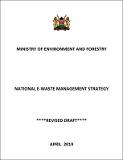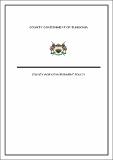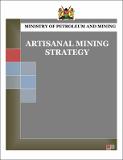Wajir County Hazards Atlas Map 2023
View/
Publication Date
2023Author
views
downloads
Metadata
Show full item recordBy
County Government of Wajir
Abstract/
Wajir County is located in the North-Eastern part of Kenya. The County lies between latitudes 3o 60‘N and 0o 20‘N and Longitudes 39o E and 41o E and covers an area of 56,685.9 Km2. (Wajir CIDP, 2018). It borders Marsabit to the North West, Isiolo to the South West, Mandera to the West, Somalia to the East and Garissa to the South. The County has a population of 781, 263, with 415, 374 males, 365,840 females and 49 Intersex (KNBS, 2019). Wajir town is the County’s capital. Othertowns include Buna, Eldas, Bute, Helu, Elben, Waghala and Khorof Harar. The County is divided into 6 sub-counties namely Wajir East, Wajir West, Wajir North, Wajir South, Eldas and Tarbaj. The 6 sub-counties are further sub-divided into 30 wards. Wajir West has 4 wards (Arbajahan, Hadado/Athiboho;, Adamasajide and Ganyure/Wagalla), Tarbaj has 4 wards (Elben, Sarman, Tarbaj and Wargadud), Wajir East has 4 wards (Wagberi, Township, Barwago and Khorof Harar), Eldas has 4 wards (Eldas, Della, Lakoley South/Basir and Elnur), Wajir South has 7 wards (Benane, Burder, Dadajabula, Habaswein, Lagbogol South, Ibrahim Ure and Diff) and Wajir North has 7 wards (Gurar, Bute, Korondille, Malkagufu, Batalu, Danaba and Godoma (WCG). The County is generally flat with an average altitude of 244m (Wajir CIDP, 2018). Wajir County falls in the ecological zones V-VI. Zone V receives rainfall between 300-600mm annually while zone VI receives an annual rainfall of 200-400mm (Wajir CIDP, 2018).
Subject/
Hazard Profile; Hazard Mapping; Atlas Development; Drought Management; Drought Prevalence
Publisher
Regional Centre for Mapping of Resources for Development (RCMRD)Series
Master Plan;2023Collections
- Spatial Plans [1]
Related items
Showing items related by title, author, creator and subject.
-
National E-Waste Management Strategy 2019-2024
Ministry of Environment and Forestry (Ministry of Environment and Forestry, 2019)The National E-waste Management Strategy is a five-year plan covering the period 2019/20 to 2023/24. The E-waste Strategy has five thematic areas aimed at resource mobilization for proper E-waste management, raising ... -
Bungoma County Work Environment Policy 2020
County Government of Bungoma (County Government of Bungoma, 2020)Systematic management of the work environment can help structure the County in a way that prevents causes of ill-health and promotes good health. In order to achieve this, it needs to be a daily routine aspect of work. The ... -
Artisanal Mining Strategy 2021-2025
Ministry of Energy and Petroleum (2020)The Artisanal Mining sector is a key contributor to both rural incomes and livelihoods. However, a number of key constraints limit its economic potential, including informality, difficulties in attracting finance, limited ...




